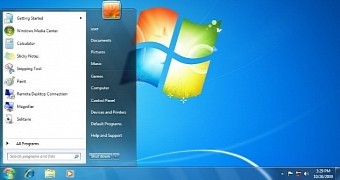The clock is ticking for Windows 7, as Microsoft is projected to stop servicing this OS version on January 14.
As of today, there are only 48 days for those on Windows 7 to upgrade to newer Windows, and without a doubt, the number of devices running the 2009 operating system keeps declining every day.
First of all, what happens on January 14?
In just a few words, January 14, 2020 represents the very first Patch Tuesday cycle of the next year and the last update rollout for Windows 7. This means that after January 14, Windows 7 wouldn’t get any other updates, so security vulnerabilities and other problems in the OS would just be left unpatched.
Because Windows 7 and newer Windows share so many components, which means that vulnerabilities in one Windows version also exist in others, the chances of the 2009 operating system being exposed to attacks is definitely increasing.
As I said several times, despite support for Windows 7 coming to end, it doesn’t necessarily mean devices still running this OS would just become sitting ducks. Nope. Windows 7 users, for example, can turn to a series of other security measures that can help them further secure their devices and block common attacks supposed to exploit OS vulnerabilities. For example, a fully up-to-date antivirus product can help stay away from malware, while a properly-configured firewall can block incoming attempts from malicious actors.
This won’t be something easy to do for everyone in Windows 7, however. And according to third-party data, there are plenty of Windows 7 devices out there, and many of them are likely to miss the January 14 upgrade deadline.
Data provided by NetMarketShare for the month of October indicates that while Windows 10 jumped to 54.30% market share, Windows 7 dropped to 26.94%. If the same declining trend is maintained, there’s a big chance for Windows 7 to still be running on more than 20 percent of devices worldwide when the January 14 deadline is reached.
Microsoft obviously recommends everyone to upgrade to Windows 10, but in reality, those still on Windows 7 have many more options when it comes to switching to an operating system that still receives support.
Windows 8.1, for example, continues to be serviced, so you can very well move to this version and you’ll still be getting security updates, just like on Windows 10. Of course, from a long-term perspective, Windows 10 is the way to go, as the new features and Microsoft’s full focus would only go to this Windows version.
But at the same time, Linux continues to be a worthy alternative. Despite some claiming that Linux isn’t as user-friendly as Windows, the distros here have made a huge progress in this regard, and releases like Linux Mint can make Windows users feel like home even from day one. There’s a learning curve, that’s true, but it shouldn’t take too long before Linux becomes a familiar home for users coming from Windows.
And last but not least, moving to macOS is still an option, albeit switching to Apple products is a bit more complicated as far as costs are involved. Apple’s macOS requires new hardware, so a bigger budget is required to give up on Windows and embrace a Mac. However, there are companies that actually go for this path.
At the end of the day, I expect many users to just stick with Windows 7 and ignore all security recommendations for at least several more months. Microsoft will continue to push for users to move to Windows 10, there’s no doubt about it, but the transition will certainly happen rather slower than faster.

 14 DAY TRIAL //
14 DAY TRIAL //